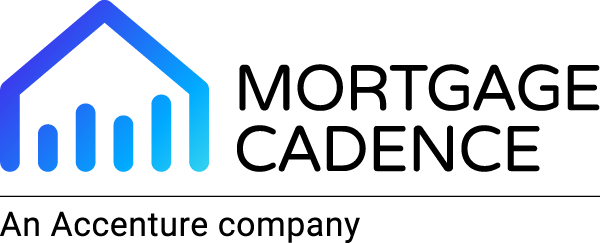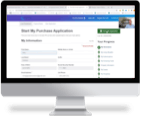The metrics that reveals high performance lending & overall profitability in the mortgage industry.
Traditionally, summer is the peak of the new home buying season, but currently the industry is struggling. While the MBA has not revised its most recent annual loan volume prediction downward, competition for overall profitability through new mortgage business comes down to high performance lending.
This shouldn’t surprise anyone, as the Mortgage Bankers Association (MBA) told us in October, 2018 that this would be a tougher year for lenders. Overall, MBA now expects mortgage business to decline 3 percent from last year to about $1.6 trillion in 2018. The refinance share will fall off dramatically but purchase money business is expected to increase to about $1.2 trillion this year. MBA said earlier this year that it expects to see rates rise another four times this year. Since then, the Fed has already raised rates once. There’s an upside to rising rates, however. They spark FOMO (fear of missing out); buyers don’t want to miss their chance at a low rate.
This means that all lenders must target purchase money business to at least hold on to their historic volume numbers. This will be increasingly difficult, as Freddie Mac increased its expectation for mortgage interest rates in February, moving the dial on the 30-year-fixed rate mortgage to 4.6 percent, on average, for 2018.
The need to compete
The need to be competitive in the mortgage lending business has never been greater. Fortunately, depository lenders have an advantage in this area as their existing customer base is a ready-made prospect database for mortgage lending, if they can tap it. Historically, this has been very difficult to do.
Six years ago, we began performing an annual study to determine exactly what impact technology could have on a lender’s ability to be a high performance lender, not just from existing customers, but from the greater community the institution serves. In the process, we learned a great deal about how lenders define their success and how, as a segment of the overall mortgage lending industry, these firms performed competitively.
In all, we found five critical measurements, five key performance indicators (KPIs), that when taken together tell us – and lenders – exactly how any lender is performing. Even better, we aggregated the data from a number of institutions, all using the same technology in their lending departments, to arrive at a set of benchmarking data that, once understood, places lenders on the path to high performance lending. This research is now known as the Mortgage Cadence Benchmarking Study.
Why use benchmark assessments?
Knowing where you stand in regard to the five KPIs we are about to define in any given year is very important. It is a good management tool that informs decision making and reveals the institution’s progress on its mission and objectives.
Understanding performance over a period of years is even more valuable. It shows how management and staff react to market forces, and how well the institution is able to adapt its business to those changing forces and continue down the path of high performance lending.
But without benchmarking data to compare the institution’s performance to the broader set of competitors, it only reveals part of the story. There are many good reasons every institution should be benchmarking their lending performance against a larger industry dataset. And that’s what our study does: if understanding your own performance over a period of time is valuable, then comparing your performance to that of your peers over the same period of time is invaluable. This is especially true in a year when we know competition for a limited number of new purchase money mortgage transactions will be fierce.
Leveling the playing field.
The battle for this business will not be a one-year phenomenon. Market forecasts through 2020 predict that 75 percent of all mortgages through that time will be for the purchase of a home. This marks the beginning of a new mortgage lending era, foreshadowing an end to the historic boom-bust refinance cycles that dictated strategy and tactics for more than 30 years.
Unfortunately, benchmarking data is difficult to come by. Studies comparing and contrasting lender-to-lender performance are challenging because gathering data from a homogeneous set of lenders is difficult, both in terms of finding such a set and in getting those firms to give up the required information. While there are some excellent studies performed by national trade associations, they often compare very different institutions, rendering their results less useful.
Our study addresses this by focusing on a homogeneous set of lending institutions that all submit data to a regulator that makes that information public. In addition, we went back to the lenders in our study and asked for additional information to complete our data set. Since there were only a few data points required to complete our analysis, we enjoyed a high degree of participation from the lenders.
We know that there are three factors that influence the performance of a lending institution: their people, their process and their technology. The way the lender combines these three critical elements will determine their performance lift. Getting them right results in high performance lending. The benchmarks are guideposts that help the leader move along the path to this goal.
Our study isolates the technology variable to further expose the correlation between performance and the other two factors, over which the institution has complete control. Our study, therefore, used a large pool of data from a set of lenders all operating under the same business model and using the exact same technology. We believe there is no better apples-to-apples performance comparison available anywhere in the industry.
Given the commonalities of lenders in our study, one would expect every lender in the study to achieve a similar level of performance. While we might expect some slight variation between institutions, perhaps based on customer size or geographic location, we might expect overall performance to fall fairly close to a common baseline. Instead, we found that differences in the way these institutions organized their staff and their process workflows led to a wide variance in performance levels between institutions.
In fact, after performing the study for 6 years, we found that some lenders are surpassing their peers in high performance lending, even when competitors are operating under the same business model and using the same technology. We needed to find out why.
What benchmark data should my institution measure?
After analyzing the data, we found a number of metrics that were indicative of the performance of an institution, but five stood out as the best predictors of the institution’s ability to continue down the path of high performance lending. We now believe that these five key performance indicators are of critical importance to management and so for the last six years we have been collecting benchmarking data to help lenders understand how well they are performing relative to their peers.
In this section, we define each of these critical KPIs.
Velocity
Stated simply, this is a measure of the time to close, from the moment the application is received until the loan is signed at the closing table. To be clear, this is not the only time that speed matters. Our Borrower Survey, for instance, revealed that the amount of time it takes for a loan officer to return a call to a prospective borrower who has not yet completed a loan application was a critical measure of the borrower’s willingness to follow through on the loan app. However, for this study, the amount of time the loan was “in process” was found to be a critical performance indicator.
Borrower Share
As mentioned earlier, borrower share, or the ratio of applications taken to total customer base in the same calendar year, is an indication of how well the lender is doing serving the prospective borrowers who are already customers of the institution. This is a largely untapped resource for most lenders and holds the key to uncommon success in a highly competitive environment, such as these firms are lending in today.
Pull-Through
This is the ratio of closed loans to applications taken and is a key driver of the institution’s profit. Lenders will tell you more than half of the total cost to close has been spent by the firm by the time the application is taken. That represents the money lenders must spend on advertising, marketing, public relations and sales staff to prospect, sell and close a full application for a new loan. If that loan is not closed, those funds are lost and the cost to close ratio increases for all other loans in the pipeline. On the other hand, the more loans the lender can pull through to close, the lower the cost to close and the higher the profitability.
Productivity
Calculated simply, productivity is the measure of closed loans per mortgage production employee per month and it is the primary profit driver for every lending operation we studied. In fact, we now believe that productivity is the single most important metric in any mortgage lending operation and it is the primary driver of profit. Get this one right and cost to close falls in line and declines.
This was borne out in our discussions with lending executives, where we found productivity to be the KPI most indicative of profitability. If we know a lender’s productivity we have a very good idea of how profitable the institution is. According to our most recent study, the average productivity for lenders in our study in 2017 was 3.34 loans per employee.
Cost to Close
Cost to Close is the total cost of manufacturing a single mortgage loan. While the Mortgage Bankers Association put the total cost to originate for mortgage banks at nearly $8,000 per loan in 2017, our study revealed that our lenders, on average, experience a cost-to-close of $5,291 per loan in 2017. Better, but there is still a ways to go.
Arguably, these five metrics are macro-level measures that are really designed to offer two advantages to management. First, four of the five are quick and easy to calculate, offering a swift measure of the health of the institution. Some will argue, perhaps persuasively, that cost to close is more difficult to calculate. While true, if a good measure for the productivity KPI is available, cost to close becomes much easier to estimate accurately. We have the tools to do so. Once productivity is known, cost to close is easily and accurately estimated.
Second, the results institutions find by measuring these metrics will always lead to important questions, or at least they should. These KPIs are macro-diagnostic in nature, revealing areas where management must continue down the micro-diagnostic path to configure their companies for high performance lending.
What our 6th annual benchmarking study data told us was that a set of high performing lenders were consistently outperforming their competitors on every metric we tracked, despite competing for the same basic client base, offering the same basic loan products and using exactly the same technology.



